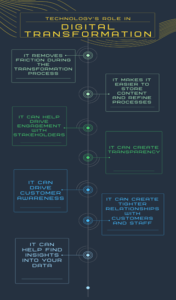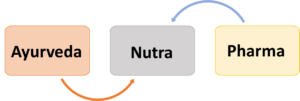Nutraceuticals, being the source of natural active constitutes boosting overall health, are the part of everybody’s life to fewer or greater extent.
Preventive health gained immense importance during pandemic, so the nutraceuticals. Looking at the ever-growing market of nutraceuticals and health supplements in recent few years, we can say, these products are positively influencing health of people while making impressive revenues.
In India, use of nutraceuticals increased manifolds during pandemic. Even the government was seemed to be taking certain positive approaches towards the traditional medicines and nutraceuticals in order to safeguard the population from the virus. Medical ] practitioners are increasingly prescribing health supplements and nutraceuticals in post-COVID recovery of the patient.
As the pandemic taught us the importance of overall nutrition, people are getting more flexible toward nutraceuticals. Increasing research and rise in innovative nutraceutical products further boosting the growth of the sector.
Following are the three major health areas into which nutraceuticals spread their magic during the tough time:
Improving innate immunity
As mentioned earlier, immune health is one of the topmost priorities while fighting the virus. Nutraceutical innovators are making unique approaches in the field. In today’s scenario, various nutraceuticals are available in variety of dosage forms like gummies, bars, etc. which further increasing the acceptance of such products.
Immunity boosting nutraceuticals are the talk of the town in today’s scenario. Particularly talking about India, herb-based nutraceuticals are very popular amongst Indians. Hence, the supplements containing Giloy (Tinospora cordifolia), Ashwagandha (Withania somnifera), Tulsi (Ocimum tenuiflorum), Neem (Azadirachta indica), Shilajit (Asphaltum punja-bianum), Amla (Emblica officinalis), Curcumin, etc. were produced and launched at greater pace during pandemic in India. Such supplements are going to stay for longer in the market irrespective of presence or absence of pandemic.
Moreover, Vitamin C and Zinc containing nutraceuticals and supplements gained tremendous attention during pandemic owing to their immunity boosting potential.
Strengthening mental functioning
Stress, anxiety, depression and many more mental illnesses were seen frequently in the population during lockdown. Lockdown-induced changes in lifestyle and eating and sleeping patterns further propelled this concern about mental health. However, nutraceuticals, our all-time saviors, helped us strengthen our cognitive functions effectively.
Various nutraceutical ingredients like anthocyanins, vitamin B12, trans-resveratrol, alpha lipoic acids, acetyl choline, gamma aminobutyric acid, etc. covered the brain health market during lockdown. Nutraceuticals containing herbs like Bacopa monniera, Ginkoba biloba, ginseng are also excellent brain boosters which are frequently employed in nutraceuticals.
Moreover, selenium, omega-3 and omega-6 polyunsaturated fatty acids containing supplements are popular brain supplements in the market today. Such nutraceuticals are very helpful in resisting neurodegenerative processes and sustaining cognitive capacities in humans.
Brain boosters are also essential for elderly people to fight age-related cognition loss, parkinsonism and other brain disorders.
Overall need of nutritional elements for health and wellbeing
Rising health consciousness among the population is resulting in increased consumption of health foods and supplements in recent times. Nutraceuticals, being the source of natural active constitutes boosting overall health, are the part of everybody’s life to fewer or greater extent.
Currently, vitamins and minerals supplements producers are driving market crazy owing to the innovations and increased value in their nutraceutical formulations. Vitamin D, dietary minerals such as iron, selenium, zinc, amino acids such as arginine, glutamine are common elements of the health supplements nowadays as people increasingly adding such health products in their lifestyle.
Moreover, the magic of prebiotics and probiotics is never going to fade away sooner or later.
Influence of nutraceuticals on current healthcare
Current healthcare system has shifted its focus from cure to care. Owing to this shift, the use of nutraceuticals along with pharmaceuticals is rising in today’s scenario.
Nutraceuticals and natural health supplements are getting well-deserved attention in the current system of healthcare. As physicians are exploring an integrative approach for treating the patients, presence of nutraceuticals in patient’s regimen is on the rise. For faster recovery and rehabilitation, during COVID, number of medical practitioners seem to be adaptive toward health supplements and nutraceuticals for patients.
In addition to this, proactive patient care is also seen frequent in today’s healthcare. Use of nutraceuticals, traditional medicines and natural health supplements is one of the essential parts of such disease prevention approaches.
As digitalization of healthcare is on the rise, new technological headways are also making their grand entrance in healthcare system. Telehealth is making its way in developing countries like India. Artificial intelligence and machine learning is also establishing in current healthcare facilities which is making healthcare tasks easier and precise than earlier.
Way forward with nutraceuticals
As people are increasingly accepting the fact that supplementary nutrition through nutraceuticals and health supplements is a need of the hour, many are looking for evidence-based products with transparency at every single step of product development. New generation consumers are not only health conscious but also have essential knowledge about the things they are consuming.
Product transparency, regulatory compliance and sincere business practices are essential in today’s scenario where nutraceuticals have competitions at every single point in the market. Although healthcare systems are seemed to be quite flexible toward nutraceuticals, for greater acceptance, patient-centric evidence-based approaches with advanced and sophisticated research outcomes are mandatory.
Moreover, when it comes to imports of nutraceuticals, regulatory framework has to be more conscious as cases were seen like import of products which are banned and restricted in India e.g., import of cannabis and its products. Also, there were incidents where such restricted products been sold through e-commerce platforms, which requires equal attention and regulatory interventions. Hence, strengthening regulatory framework for nutraceuticals and health products is essential in this evolving health scenario.
The article is written by Dr. R.B. Smarta and published by Business world














